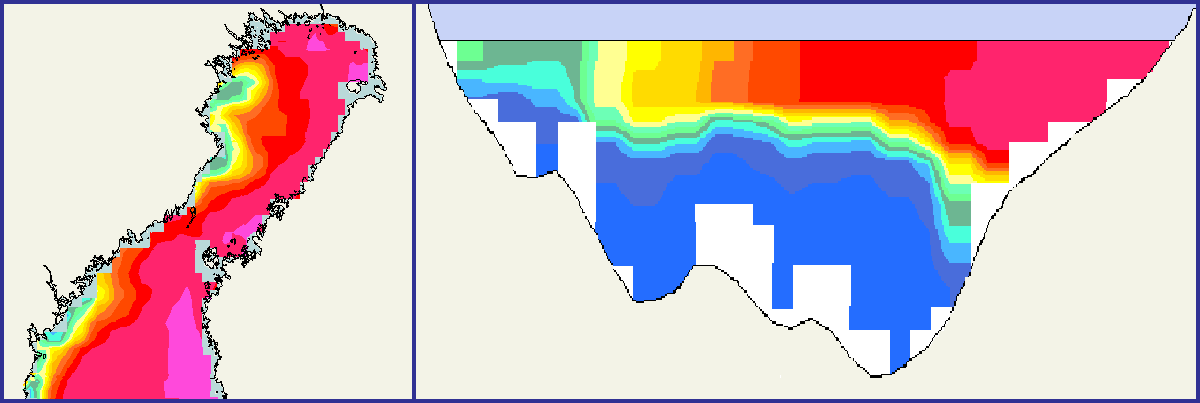Upwelling
Upwelling is a situation where surface water flows away from the area, and colder and usually more nutrient-rich water rises to its place. In oceans the water can rise from the depth of 200 meters, but in the Baltic Sea upwelling usually happens in the first few tens of meters of the surface. Still, the difference in temperature between the water masses can be up to 10 degrees. That’s why upwelling is seen clearly as the rapid cooling of the surface water.
The flow of the surface water away from the upwelling area is the result of suitable winds. In the northern hemisphere, when winds blow along the shore so that the shore is to the left of the wind direction, the Coriolis-effect caused by the spinning of the Earth causes the surface water to flow away from the coast towards the open sea. In the southern hemisphere the Coriolis-effect turns currents to the left. Water from deeper rises to the surface to fill in the space. Wind blowing straight from the coast to the open sea can also cause upwelling.
Upwelling always needs time and moderate breeze. When studying upwelling in the Gulf of Finland, it was found that a moderate breeze must blow along the coast at least a couple of days before the upwelling can begin. When the conditions causing upwelling end, currents even out the temperature in a few days’ time.
In oceans, upwelling is a significant phenomenon, because it brings nutrients to the surface and increases primary production in the surface layer. These areas are usually important fishing areas. One known example is the coast of Peru, where upwelling makes the area have rich fish stock and seabird wildlife, since there is plenty of nutrition for them in the water. In the Baltic Sea upwelling can cause algal blooms. This can happen late summer, when the nutrients at the surface have been worn out but moderate winds start to appear after the weak winds of the summer.
The opposite phenomenon for upwelling is downwelling. This happens when water flows towards the coast and sinks deeper. Downwelling does not however have the same kind of effect to the ecosystem as upwelling.

9.12.2022
